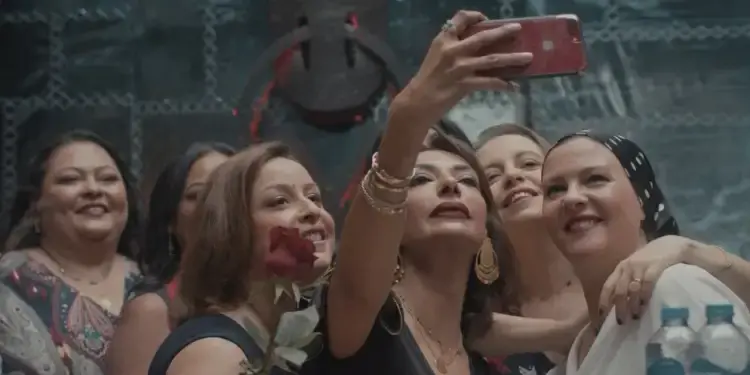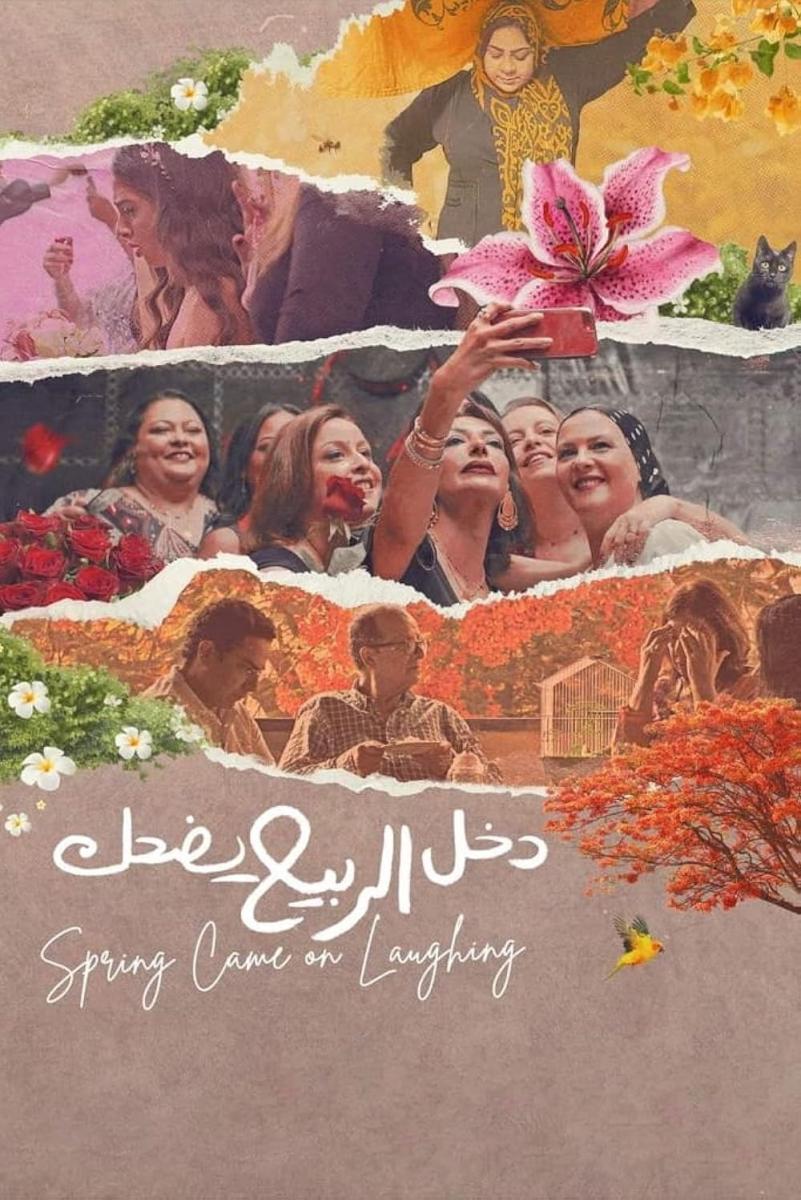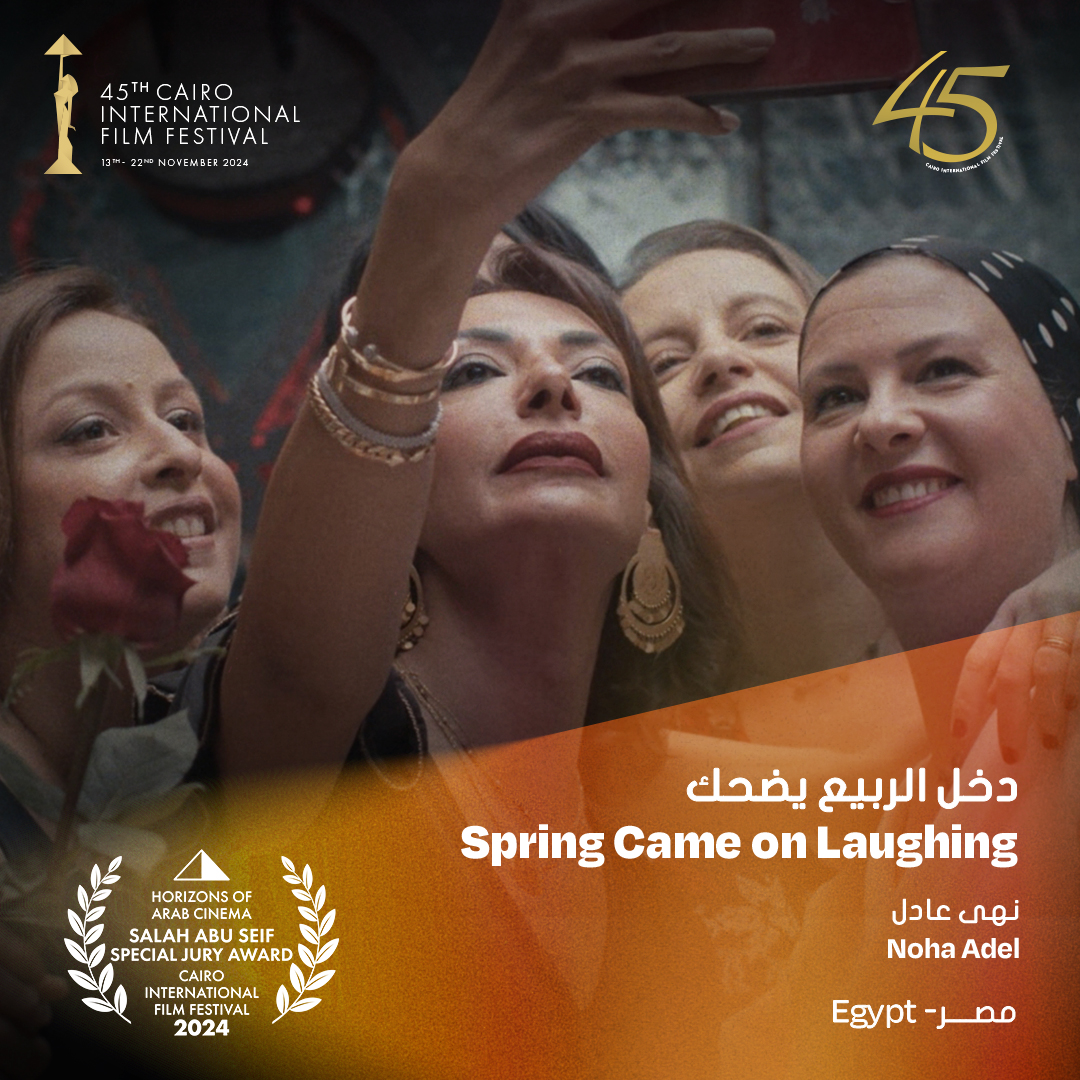Last night, during the closing of the 45th edition of the Cairo International Film Festival, The Egyptian film Spring came laughingproduced by Noha Adel, triumphed By winning a special mention of the Arabic cinema jury, and three prestigious prizes : The Henry Barakat Prize for the best artistic contribution (ex -quo), the Fipresci Prize for international criticism, and the Salah Abu Seif Prize for the best achievement. This film, which was making its debut in international competition, is the only Egyptian feature film selected this year. With an original narration and an incisive look at the female condition, Spring came laughing offers a poignant and artistic exploration of human complexities.
A mosaic of intertwined stories
This feature film deploys four distinct stories, linked by the common theme of spring, a season which, far from being limited to images of renewal and joy, reveals here buried pain. Each story begins in an ordinary and familiar setting, before suddenly switching to emotional chaos where social masks fall. These stories reflect the tensions inherent in human relations, whether family, friendly or romantic.
- Late marriage : A widower and her son visit their neighbors, a widow and her daughter. They spend a long time sipping tea on the balcony, speaking song, theater, cinema … The tone is friendly, light and very polite. When the son reveals that they really came to ask for the mother’s hand for the father, the atmosphere changes radically. The girl, hitherto courteous, explodes with anger. The tone changes completely, and it is only cries and invective, between the two youngest. The girl accuses her mother of betraying the memory of her late husband and not thinking about the social repercussions of such a marriage. This conflict highlights intergenerational wounds and family taboos, revealing the tensions between filial duty and quest for individual happiness.
- The doubts of a bride : The day of her wedding, a young woman realizes that she does not really like her future husband. The tension reaches its paroxysm when it decides to say “no”. The decision causes a tumult among the guests. The bride’s mother manages to blame a divorced guest whom she accuses of “bringing bad luck” to the couple. The latter reacts with a sharp tirade, denouncing tenacious prejudices and oppressive superstitions towards divorced women. This intense scene reveals deep fractures in mentalities and highlights the complexity of social expectations.
- Fragile friendships : During a birthday lunch, a group of friends is in an elegant restaurant to celebrate and chat, surrounded by a warm atmosphere and tasty dishes. The laughter bursts, but little by little, the eyes harden. The conversation, first light, derives towards delicate subjects: a lie, a betrayal, and finally infidelities are revealed, causing stupor and anger. The atmosphere radically changes, exchanges become acerbic. One of the friends, who seemed to be discreet until then, ended up admitting a secret, further amplifying tensions. The formerly solid links break, highlighting the fragility of relationships and the weight of the unsaid and misunderstanding that have accumulated over the years.
- Daily injustice : In an animated beauty salon filled with light conversations, the employees are busy around clients chatting happily. Suddenly, the smiles fade when a client declares that her ring has disappeared and accuses a manicure of having stolen it. She tries to defend herself by explaining that she has not taken anything. But faced with the insistence of the client and the tacit support of others, the accusation becomes an implicit truth. The murmurs and the judgments are raising. This moment, full of tension and discomfort, reveals insidious prejudices and an implicit social hierarchy. Finally, the employee, unjustly accused, is forced to leave. Along the way, she realizes that the ring is in her business, what will she do? Return it? Or keep it out of revenge?
A realization marked by spring
Spring, a symbol of hope and renewal, becomes under the direction of Noha Adel an ambiguous theme. The director explains that she has chosen this season to explore the contrasts between appearances and realities: “ Spring is not only a joyful era. He can be misleading, revealing interior storms under a beauty facade. »»
This choice translates to the screen by an aesthetic both poetic and raw. Egyptian landscapes and traditional music serve as a backdrop for scenes where the camera, mobile and immersive, captures the intimacy of the characters. Each plan seems meticulously choreographed to reveal the truth hidden behind laughter or tears.
An anchoring in Egyptian culture
The Egyptian songs present in the film play an essential role in further rooting history in its cultural context. These melodies, whether nostalgic or coaching, strengthen the local identity of the work while establishing a powerful emotional link with the public. They act like a common thread, bringing touches of authenticity and making each scene even more immersive.
A work with a large female dimension
The film is based on a predominantly female team, from production to production. Kawthar Younis, producer of the film, and who plays there the role of the divorced friend, underlines the importance of giving a voice to women through this work: “ We wanted to create a space where the emotions and experiences of women can be explored without filter. »»
The performances of actresses, often from unprofessional environments, add a striking authenticity. Noha Adel preferred unique sockets to capture spontaneous emotions, thus strengthening the impression of living events alongside the characters.
A mixed but engaging reception
During its first screening, the film aroused criticism, notably from certain Egyptian spectators who saw it as a negative representation of the Egyptian woman. However, this polarization testifies to the impact of the work, capable of generating a debate on taboo themes and often obscured realities.
I personally liked the originality of this completely unusual and unusual film, where we see each time a calm and ordinary scene which explodes suddenly with a lot of force. I was also struck by the sincerity and the depth of the film. Showing real aspects of life, Spring came laughing succeeds in capturing the essence of cinema: not embellish reality, but reveal it in all its complexity.
With Spring came laughingNoha Adel delivers a bold and unforgettable first feature film, which amply deserves its place at the Cairo International Film Festival. By exploring universal themes through an Egyptian cultural prism, the film shows that the most local stories can resonate on a global scale. It is a work that invites reflection and recalls the power of cinema to transcend borders, both geographic and emotional.
Neïla Driss










